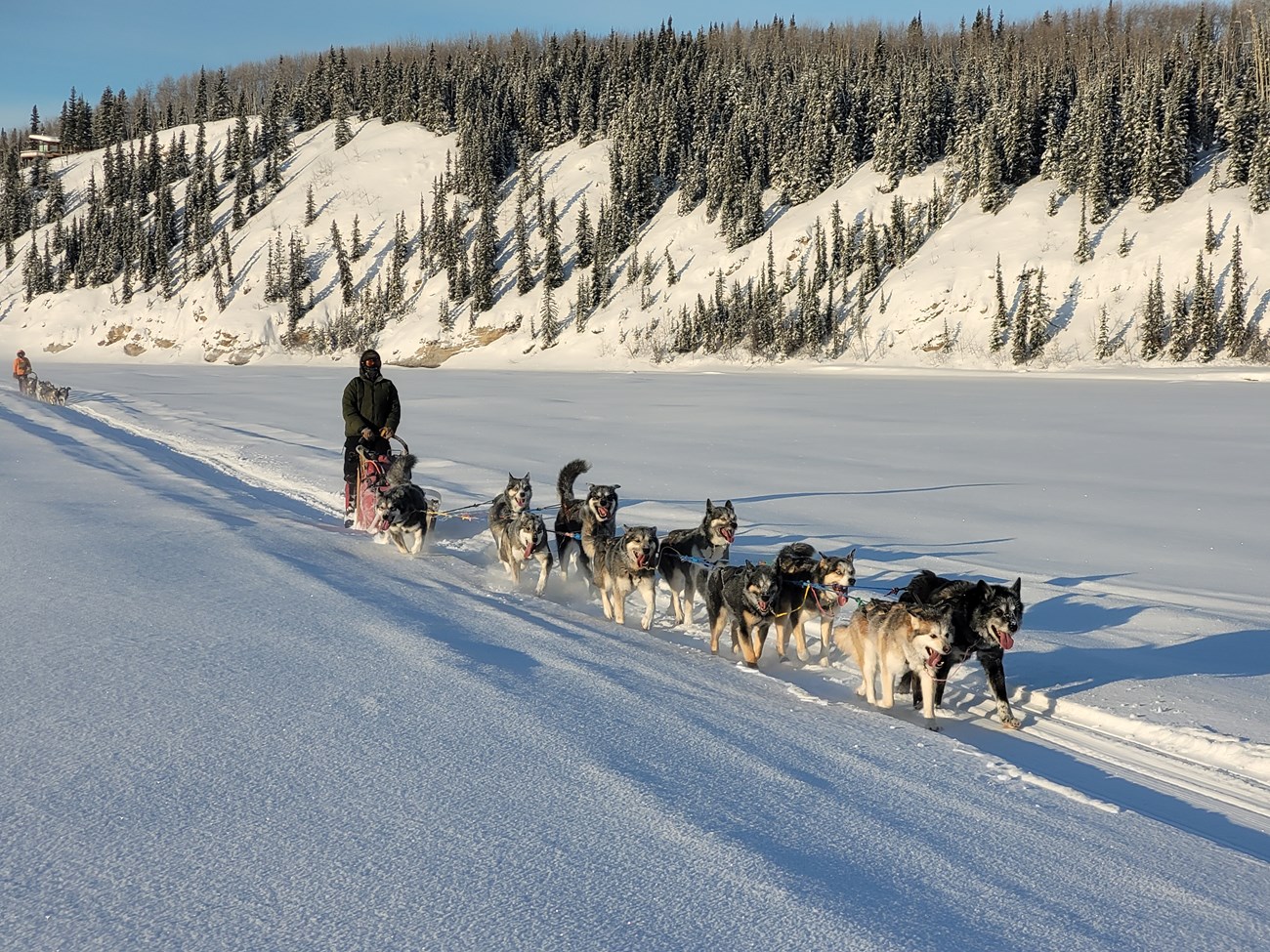
For over one hundred years, the Denali Sled Dog Kennels, located within Denali National Park and Preserve, has been the only sled dog kennel in the National Park Service and one of the oldest sled dog kennels in the country. While sled dogs have been relied upon as a traditional method of transportation in Alaska for many hundreds of years, human and canine rangers have worked together since 1922 to uphold the tradition of preserving the park’s vast wilderness by dog team. The role of the Kennels has evolved over time. While dog teams once focused on patrolling boundaries to prevent poaching, today they assist scientists and park staff by providing reliable transportation in extreme winter conditions, monitor conditions and establish routes for winter recreation, and transport heavy supplies for maintenance projects in wilderness areas where motorized tools are not allowed. Sled Dogs & the Establishment of the ParkWhen naturalist Charles Sheldon needed a guide to assist with his studies of Dall sheep in Denali country during the winter of 1907-1908, he hired veteran Alaskan dog musher Harry Karstens. Sheldon was so enchanted with the mountains and wildlife that when he returned to the East Coast, he lobbied Congress to set this area aside as a national park, a long campaign that came to successful resolution with the establishment of Mount McKinley National Park in 1917. It was 1921 before the first ranger was hired, and that ranger was none other than Harry Karstens. Among his first duties was to bring poaching of the park's wildlife under control. Caribou, moose, and Dall sheep were being hunted throughout the northern drainages of the park to feed settlers in Fairbanks and other gold camps, as well as the thirty or more dog teams in the Denali area; the levels of poaching were devastating the wildlife population. Karstens, who knew that the best way to travel in this frozen country was on a sled behind a team of enthusiastic huskies, founded the park kennel to ensure a reliable supply of healthy, well-trained, working dogs. Over the next few years, more rangers were hired and the park kennels were expanded. Each ranger was assigned a team of seven dogs and a district of the park that they had to patrol in the winter. Ranger Grant Pearson, who was hired by Karstens in 1926, recalls being told that he was lacking in experience but considered capable of learning. To test him, Karstens said, "I'll send you on a patrol trip alone. You will be gone a week. If you don't get back by then I'll come looking for you, and you had better have plans made for a new job." Patrols lasted months at a time; in between, rangers would return to Headquarters, restock provisions, and head out once again. With the assistance of the dogs, who pulled the supply-loaded sleds and hauled logs, these pioneer rangers also constructed cabins along the boundaries to provide shelter for them and their dogs while they were out on patrol. By the late 1920s, the kennels were thriving, and in 1929, the present kennel building was constructed. By 1936, fifty dogs and fourteen pups were housed and cared for at the National Park Service (NPS) kennels, and they soon became one of the most popular summertime attractions for the increasing numbers of tourists who were finding their way to the park. Over the course of the next three decades, a series of legislative acts led to a renaissance of interest in the sled dogs and strengthened NPS commitment to their presence in the park. Denali's Kennels in the ANILCA EraIn 1980, another incentive for using sled dogs at the park was provided with the passage of the Alaska National Interest Lands Conservation Act (ANILCA). This legislation tripled the size of Mount McKinley National Park, changed its name to Denali National Park and Preserve, and designated the original two-million acre park parcel as wilderness under the 1964 Wilderness Act. According to this act, wilderness is "an area where the earth and its community of life are untrammeled by man, where man himself is a visitor who does not remain." This new legal designation of wilderness prohibited certain activities, such as the use of motorized equipment and mechanized transport. Travel by sled dogs provided the perfect alternative; the dogs allowed the rangers to continue carrying out the park's mission during the winter months. 2022 Kennels CentennialIn 2022, we celebrated 100 years of dogs and rangers working together in Denali. These dogs are authentic working dogs; they continue to haul materials in Denali’s two million acres of federally designated wilderness area. In fact, one observing Denali’s human and canine rangers out on patrol might think little time has passed since the days when Harry Karstens patrolled the park by dog team. The Kennels continue to embrace what works best for this land and share the region’s rich mushing history with visitors. By upholding tradition, the Kennels are informed and empowered—not restricted—by the past. In a time when the majority of Alaskan Huskies are racing dogs and our wilderness areas are increasingly fragile, the Denali Kennels exist to preserve a unique tradition in a special place—and that’s worth celebrating. The Kennels Centennial was recognized in a variety of ways. A few highlights included:

NPS Photo |
Last updated: June 15, 2024
